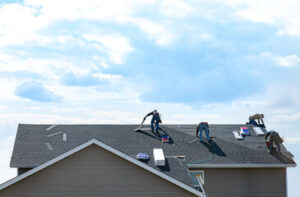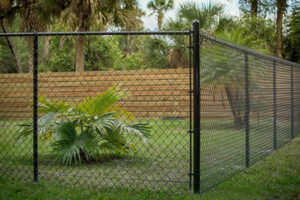Your roof stands between your home and the elements. Not only does it protect against obvious dangers like weather events and falling tree branches, but it also helps to retain heat and prevent energy waste.

Performing regular inspections and making timely repairs will help to maximize this major investment. Contact Ellingon Roofing LLC for professional help.
Over time, flashing can become loose and pull away from the roof. When this happens, water can leak into your home through the roof and cause rotting wood or mold. To keep this from happening, regularly inspect your flashing to ensure it’s properly secured and able to perform its job.
Most leaks around chimneys and corners of the roof can be traced back to problems with the flashing. It’s a good idea to make this part of your roof inspection routine, but also look for other issues that may affect the flashing, like corrosion from weathering, damage from wind or debris, or the presence of moss or algae.
There are a few different types of flashing, and your roofing contractor will choose the appropriate type for the area where it is installed. One common type is called base flashing, which consists of two pieces of metal that can move over one another as the roof expands and contracts. This is often used at the base of chimneys and other protrusions.
The other kind of flashing is called headwall flashing. It’s a long piece of metal that carries water down from the roof to the shingles below. This flashing must have built-in expansion joints to accommodate the movement of your home.
Checking for leaks with the help of a garden hose is an easy way to see if your flashing is in good condition. Send a person up in your attic with a ladder and a hose, and have them run the hose across the areas where flashing is located, such as at the chimney, skylights and vents. If the hose detects water, that means the flashing in that area is damaged and needs to be replaced.
Another quick fix for flashing is replacing caulk, which seals the gaps between your flashing and shingles. It’s important to use non-petroleum caulk, as the petroleum in regular caulking can degrade the rubber components of flashing over time. It’s also a good idea to use zinc or lead control strips to prevent moss or algae from growing on your roof.
Inspect the Gutters
Gutters are fastened along a roof’s edge and capture runoff, directing rainwater away from the structure. Over time, gutters can become clogged with leaves, twigs, debris and more. Clogged gutters can overflow and cause water intrusion down the roofline, affecting the siding, foundation and other elements. Regular inspections and maintenance are necessary to keep the gutters free from clogs and functioning as they should.
To inspect the gutters, start by removing any visible debris and checking for water buildup. Look for holes in the gutter troughs, which are typically caused by wear and tear or poor installation. If there are any holes, they must be repaired as soon as possible. Look for rust as well, which can be prevented by painting the gutters with a high-quality metal primer and paint.
Next, check the movement of water through the gutters. If the water moves slowly or if there is standing water in the gutters, this is a sign that the slope is not steep enough. In this case, you should reposition the hangers or spikes to create more of a slope that directs water easily into the downspout.
In addition, be sure to check for moss and mildew. These can grow in damp or shaded areas and if not removed, they can lead to serious roof damage over time. If you notice moss or mildew, wash the area with a power washer using low pressure to avoid cracking the clay tiles.
Climbing onto the roof to inspect the gutters is dangerous and should only be done by a professional. In fact, it’s best to hire a roofing contractor for this part of the maintenance.
They’ll be able to use a ladder to get a better view of the gutters and will have a more in-depth knowledge of roof maintenance. They can also help you determine whether the gutter system is in need of repair or replacement. In addition, they can install splash blocks, which are rectangular, angled pieces of concrete or plastic placed under each downspout to absorb the impact of water and help direct the flow of water into the gutters.
Inspect the Soffit
While the soffit may seem like an insignificant piece of a home’s exterior, it serves a vital function. Located along the bottom edge of an overhanging roof, soffits help protect homes and roofs from moisture and pests, and ensure proper attic ventilation.
Made from wood, aluminum, vinyl, OSB siding, gypsum board, plywood, and fiber cement, soffit boards are typically designed to withstand rain, snow, and high winds, but they can wear down over time and require replacement or repair. Damaged soffit boards can allow moisture to penetrate a home’s attic, leading to rot, mold, mildew, and structural damage. Additionally, clogged soffit vents can impede air flow to the attic, increasing the risk of hot and humid summer temperatures and freezing temperatures in the attic space.
Performing visual inspections of the soffit on a regular basis is critical for identifying early signs of wear and tear, or potential problems. Peeling paint, separation between materials, staining or streaking, and mold or mildew are common signs of deterioration in the soffit. Additionally, the soffit and fascia should be free of bird droppings, beetle nests, and other debris.
In addition to providing protection from the elements and moisture, a well-maintained soffit can prevent pest infestation and keep raccoons, squirrels, birds, bats, bees, and wasps from entering the home. Damaged soffit areas can become entrance points for these critters, who will gnaw through wiring and insulation, create a biosphere in the attic, and leave behind feces, urine, and saliva that are a health risk to residents.
When it comes to soffit and fascia repairs, it’s best to call in professionals rather than attempt DIY repairs. Professional contractors have the expertise, tools, and safety equipment to make quick repairs without compromising the integrity of the home’s roofing system. When repairs are done correctly, soffits can last for years and provide long-term weatherproofing and ventilation benefits. The most effective soffit repairs are performed in conjunction with roof repair or installation. This helps to ensure that the damaged soffit and fascia are properly matched to the new roofing system, which will prolong its lifespan and reduce repair costs in the future.
Inspect the Fascia
The fascia is a long board that runs along the lower edge of the roof’s eaves. It serves both aesthetic and functional purposes, giving the roof a polished look while protecting the rafters and trusses from moisture and pests. It also supports the gutters and channels rainwater away from the roof and walls of the house, prolonging the life of roof shingles and reducing the risk of water damage.
While the fascia is relatively durable and can last for decades without requiring replacement, it does require periodic maintenance to ensure that it is functioning correctly. This includes regularly cleaning the fascia boards to remove debris, trimming back any overhanging branches or plants, and repainting as needed. When a roof’s fascia is damaged or worn, it can allow water to infiltrate the underlying structure and lead to problems such as rot and mold.
If you find that your fascia is damaged or rotting, it’s important to address the issue immediately. If left untreated, the problem can spread to the soffit and roof structure, causing leaks and structural damage.
Fascia boards are typically made of wood, and over time, they can rot or decay. This may result in soft spots, discoloration, or peeling paint. If the rot is severe, it can cause the underlying wood to swell and pull away from the home, leading to further problems.
Another common problem with fascia is insect infestation. If the soffit and fascia aren’t properly sealed, it can create an environment that attracts pests, including mice, rats, and birds. Inspecting the soffit and fascia for signs of infestation is crucial, including chew marks, droppings, and nests. If you notice any of these signs, it’s recommended to call a professional for repairs or removal of the infestation.
The soffit, fascia, and gutter system are vital components of the roofing system. It’s important to inspect them frequently and take steps to maintain them in good condition, especially following a storm or during seasonal changes. Inspecting the soffit, fascia, and roof for damage or wear can prevent costly repairs in the future and extend the lifespan of your roofing material.

